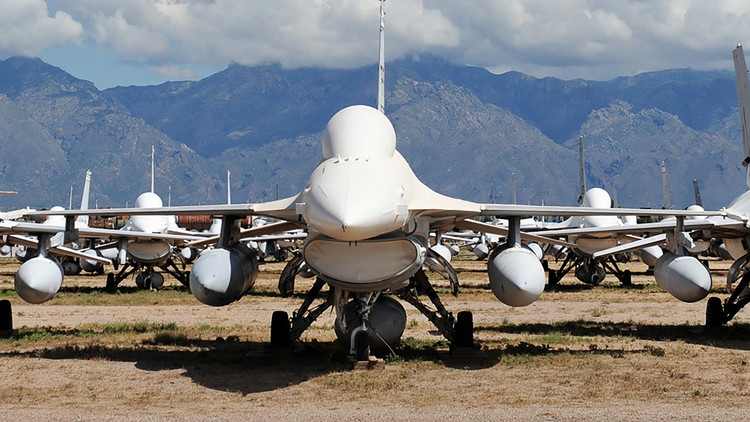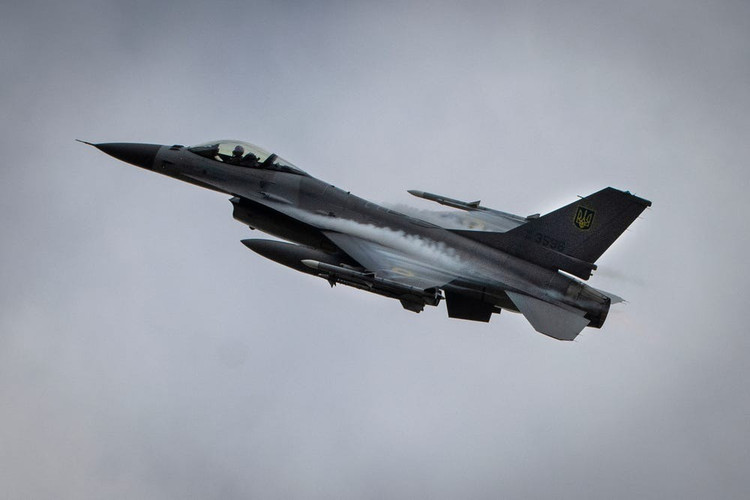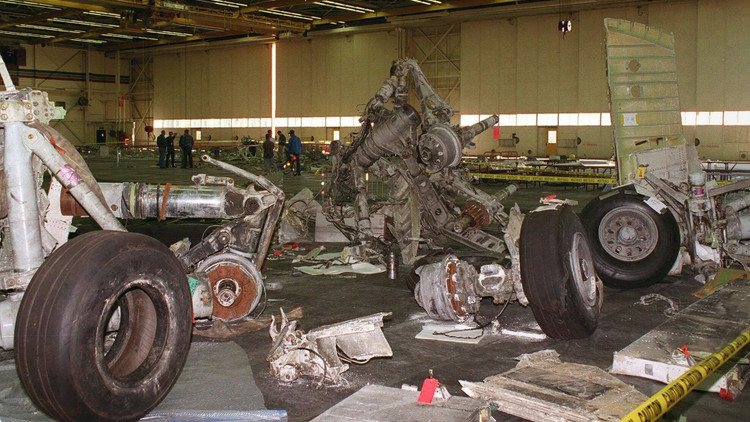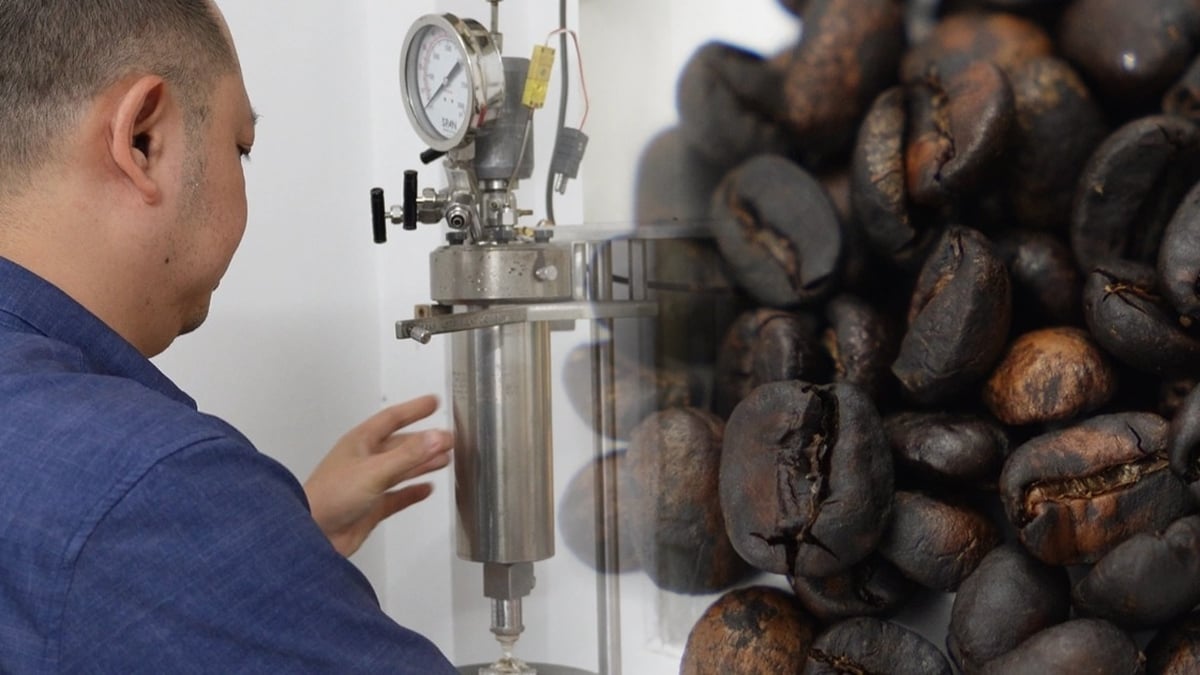“Strategic materials” from the Cold War era
In late April 2025, an absurd drama about the “rebirth of scrap metal” was staged at Davis-Monthan Air Force Base, deep in the Arizona desert.
On a desert runway known as the "aircraft graveyard," the remains of three F-16 fighter jets were wrapped in plastic wrap and loaded onto a Ukrainian An-124 transport plane.
Forty-eight hours later, these “iron coffins” without engines, radars and wings appeared at Poland’s Rzeszow airport, a transit hub for Western military aid to Ukraine.

“These retired fighters are only salvageable for parts,” a US Air Force spokesman said blandly. But the shipment of scrap metal halfway around the world has torn apart the complex strategic chessboard behind the Russia-Ukraine war.
Of the more than 340 F-16s in the "aircraft graveyard", the Block 15 model chosen this time can be called the oldest fighter. The F-16 batch was built for this air defense mission and entered service in 1980. The iconic "bird beak" on the nose of the aircraft, used to distinguish friend from foe, has long been out of use on the modern battlefield.
According to War Zone magazine, the US military dismantled the APG-66 radar and Pratt & Whitney F100 engine, and even cut the hydraulic lines. But these “scrap” aircraft will be converted into “strategic supplies” when on April 26, 2025, it was announced that Ukraine needed landing gear bearings, cockpit wiring, and flight control computers to maintain the operations of its fleet of 85 European-funded F-16 aircraft.
The practice of “taking money from one pocket to pay another” is rife with dark humor. The delivery of 30 Belgian-funded F-16s to Ukraine was delayed due to a lack of spare screws, and 24 Dutch-supplied fighters needed their fuel pumps replaced every two hours of flight.

The components the US digs up from the scrap heap could fill a supply gap for its European allies. What’s even more enticing is that the cost of shipping this “scrap metal” is included in the US military aid bill for Ukraine. The Pentagon not only clears out its inventory, but also earns “storage fees.”
The Strategic Trap of Dual Packaging
While Ukrainian pilots fret about the quality of F-16 Block 15 simulators at a Romanian fighter pilot training center, politicians in Washington are busy placing another set of constraints on Kiev.
The U.S.-Ukraine Reconstruction and Investment Fund Agreement (aka the Minerals Agreement), signed on April 30, ostensibly promised to help Ukraine restore its economy , but in reality included provisions for resource sharing. The agreement stipulates that 50 percent of profits from newly developed mineral deposits will go to U.S. funds and that mining equipment “will be prioritized for products manufactured in the United States.”

American companies have long eyed lithium deposits in Zaporizhia and rare earths in Donbass, although geological reports suggest that the reserves are not yet sufficient for commercial exploitation.
This “military + resources” duo can be seen as a new model of modern colonialism. F-16 components are a concern for the Ukrainian Air Force, and the mineral deal is a threat to President Zelensky’s government.
One Ukrainian netizen complained on a social platform: "Our pilots are using components manufactured 40 years ago for air combat, but the national treasury has to pay for mineral resources for the next 50 years."

The escalating spiral of proxy wars
Russian military intelligence knows exactly where the wrecked F-16s come from. Spare parts from this “aircraft graveyard” are helping the Ukrainian F-16 squadron maintain a frequency of 10-12 sorties per day.
A Ukrainian F-16 fighter jet armed with an AIM-120C missile successfully intercepted a Russian Su-34 bomber over the Black Sea. But Russia quickly adjusted its tactics, deployed the S-350 air defense system, and offered a reward to the pilot who shot down the F-16.
As a result, the technological game on the battlefield continues to escalate: the US Army's 68th Electronic Warfare Squadron has optimized electronic countermeasures systems for the Ukrainian Air Force, while the Russian military has installed anti-radiation seekers on its missiles.

A more dangerous signal comes from the strategic level. The US Congress is considering the “Ukraine Long-Term Defense Act,” which includes plans to put the F-4 Phantom fighter jets in the “aircraft graveyard” on the list of those to be scrapped for spare parts.
“The West is turning Ukraine into a giant weapons testing ground,” Russian Foreign Ministry spokeswoman Zakharova warned. The conflict, initially limited to Donbass, is developing into an arena for US, Russian and Western military technology.
While Ukrainian workers assemble parts from the “aircraft scrapyard” on the banks of the Dnieper River, the defense industrial complex in Arizona (USA) is operating at full capacity. Lockheed Martin has received a $470 million contract to convert decommissioned F-16s into QF-16 target drones; Raytheon has signed a contract to refurbish the dismantled parts.
Behind this “scrap metal recycling cycle,” stocks of U.S. arms manufacturers have risen 23 percent (year-to-date). A report from the Institute for the Study of War (ISW) found that every $100 million in weapons shipped to Ukraine could create 1,800 jobs in the United States.
Interestingly, the dismantled F-16s still retain their Cold War paint. These weapons, once designed to fight the Soviet Union, are now traveling “through time and space” to continue fighting Russia.
History seems to have played a cruel joke, while the US was “digging up Cold War relics from the desert”, Moscow displayed its latest Oreshnik hypersonic missile at the Red Square parade on Victory Day on May 9 - two weapons separated by forty years, continuing the chapter of the great power game under the same sky.
Source: https://khoahocdoisong.vn/my-tinh-toan-gi-voi-ukraine-khi-vien-tro-f-16-tu-nghia-dia-may-bay-post1557545.html



































































![[Photo] National Assembly Chairman Tran Thanh Man receives Chairman of Morocco-Vietnam Friendship Association](https://vphoto.vietnam.vn/thumb/402x226/vietnam/resource/IMAGE/2025/7/26/b5fb486562044db9a5e95efb6dc6a263)



































Comment (0)